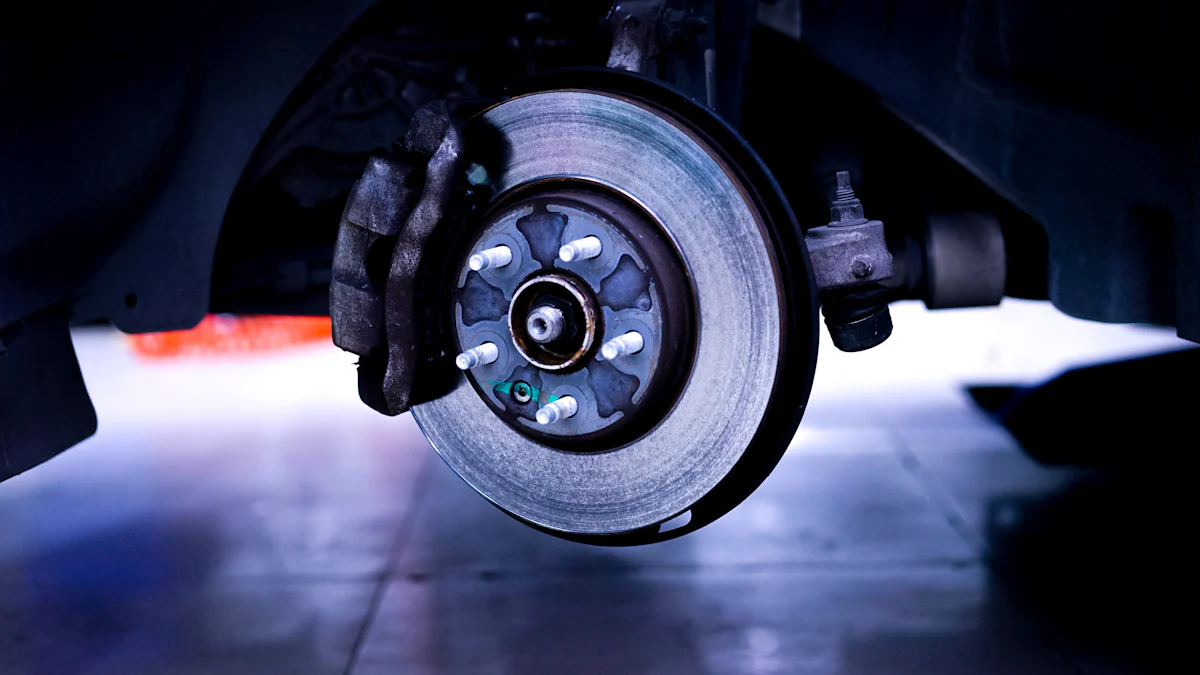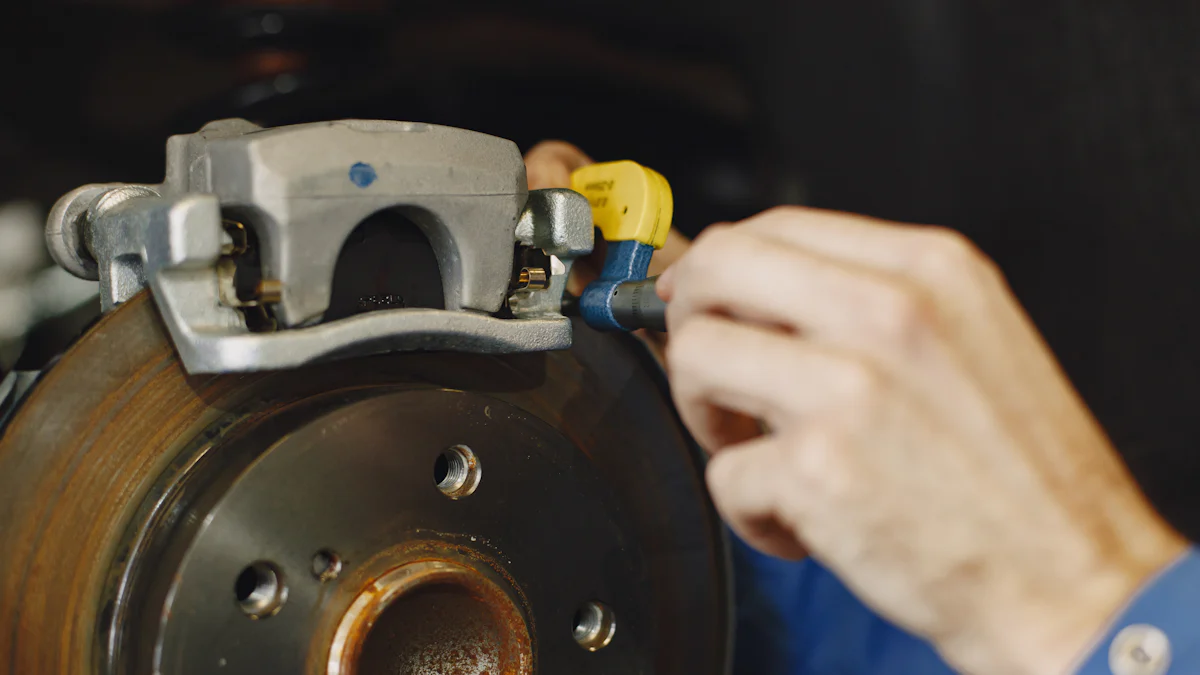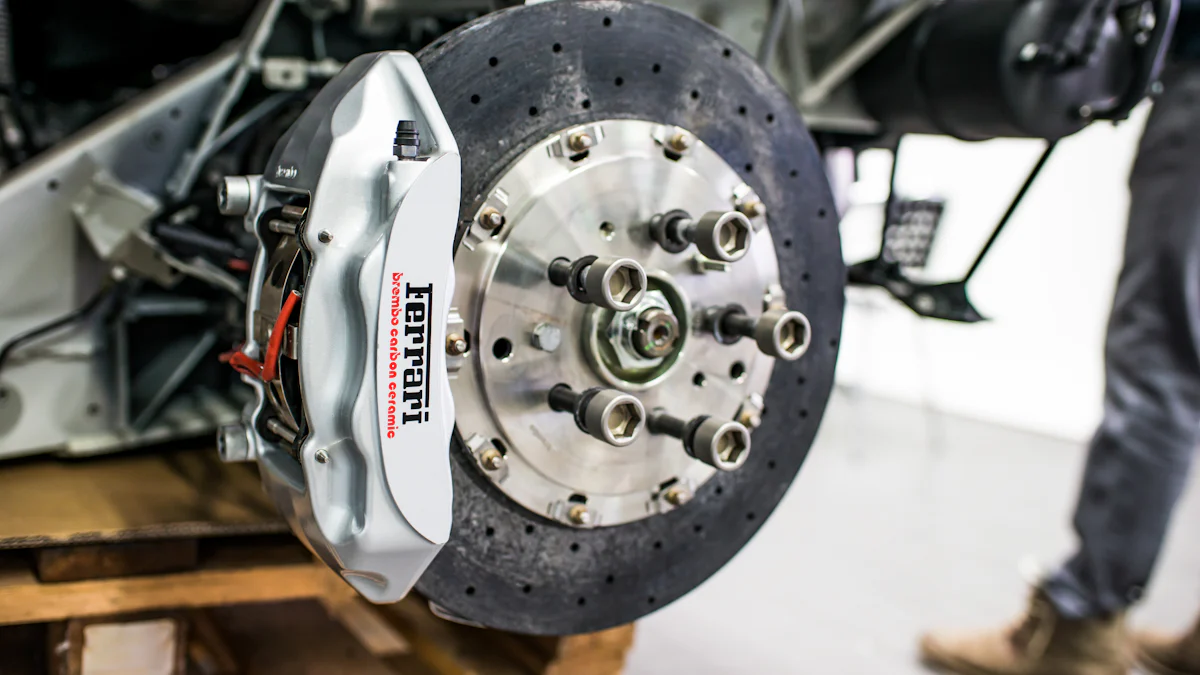
A slack adjuster plays a critical role in your vehicle’s braking system. It connects the brake chamber to the brake drum, ensuring proper brake function by maintaining the correct distance between components. You’ll find two main types: automatic and manual. Understanding their differences helps you maintain your vehicle’s safety and performance effectively.
Key Takeaways
- Understanding the role of slack adjusters is crucial for maintaining your vehicle’s braking system, ensuring safety and performance.
- Automatic slack adjusters offer convenience and consistent performance, making them ideal for commercial vehicles, while manual slack adjusters provide cost savings and control for smaller vehicles.
- Regular inspection and maintenance of slack adjusters, whether automatic or manual, are essential to prevent brake failure and ensure reliable braking performance.
Overview of Slack Adjusters
Definition and Purpose of Slack Adjusters
A slack adjuster is a mechanical component in a vehicle’s braking system. It connects the brake chamber to the brake drum and regulates the distance between them. This ensures that the brakes engage properly when you press the pedal. Without it, the braking system would lose efficiency over time due to wear and tear.
The primary purpose of a slack adjuster is to maintain the correct brake clearance. It compensates for the natural wear of brake linings, ensuring consistent braking performance. This component also plays a role in transmitting the force from the brake chamber to the camshaft, which activates the brakes.
Importance of Slack Adjusters in Braking Systems
Slack adjusters are essential for safe and reliable braking. They ensure that your vehicle’s brakes respond effectively in all conditions. Properly adjusted brakes reduce stopping distances, which can prevent accidents.
When slack adjusters fail or are not maintained, the braking system becomes less effective. This can lead to delayed braking or even brake failure. Regular inspection and maintenance of slack adjusters help you avoid these risks.
For commercial vehicles, slack adjusters are even more critical. These vehicles carry heavy loads and require precise braking systems to ensure safety. Whether you use an automatic or manual slack adjuster, keeping it in good condition is vital for optimal performance.
Automatic Slack Adjusters

Definition of Automatic Slack Adjusters
An automatic slack adjuster is a self-regulating component in a vehicle’s braking system. It adjusts the brake clearance automatically as the brake linings wear down. This ensures that the brakes remain responsive without requiring manual intervention. You’ll often find these in modern commercial vehicles due to their convenience and reliability.
How Automatic Slack Adjusters Work
Automatic slack adjusters operate using a ratchet mechanism. When the brake pedal is pressed, the adjuster measures the stroke of the brake chamber pushrod. If the stroke exceeds a preset limit, the adjuster automatically tightens the brake clearance. This process ensures consistent brake performance and eliminates the need for frequent manual adjustments.
Advantages of Automatic Slack Adjusters
- Convenience: You don’t need to manually adjust the brakes, saving time and effort.
- Consistency: These adjusters maintain optimal brake clearance, ensuring reliable braking performance.
- Safety: By reducing the risk of human error, they enhance overall vehicle safety.
Disadvantages of Automatic Slack Adjusters
- Complexity: Their design makes them harder to repair or replace.
- Cost: Automatic slack adjusters are more expensive than manual ones.
- Dependency: If the mechanism fails, it can lead to brake performance issues.
Maintenance for Automatic Slack Adjusters
You should inspect automatic slack adjusters regularly. Check for wear, damage, or improper functioning. Lubricate the moving parts as recommended by the manufacturer. Avoid manually adjusting them unless absolutely necessary, as this can disrupt their automatic function.
Manual Slack Adjusters
Definition of Manual Slack Adjusters
A manual slack adjuster is a mechanical device that requires you to adjust it manually to maintain proper brake clearance. It connects the brake chamber to the camshaft, ensuring the brakes engage effectively. Unlike automatic slack adjusters, these do not self-regulate. You must periodically inspect and adjust them to compensate for brake lining wear.
How Manual Slack Adjusters Work
Manual slack adjusters operate through a simple adjustment mechanism. You use a wrench to turn the adjustment bolt, which changes the position of the camshaft. This process reduces or increases the brake clearance. Regular adjustments ensure the brakes remain responsive and effective.
Advantages of Manual Slack Adjusters
- Simplicity: These adjusters have a straightforward design, making them easy to understand and repair.
- Cost-Effective: Manual slack adjusters are less expensive than their automatic counterparts.
- Control: You have direct control over the adjustment process, ensuring precision.
Disadvantages of Manual Slack Adjusters
- Time-Consuming: Regular manual adjustments require time and effort.
- Risk of Human Error: Incorrect adjustments can lead to brake performance issues.
- Maintenance-Dependent: Neglecting adjustments can result in unsafe braking conditions.
Maintenance for Manual Slack Adjusters
You should inspect manual slack adjusters frequently. Check for wear, rust, or damage. Adjust the brake clearance as needed using the adjustment bolt. Always follow the manufacturer’s guidelines to ensure proper functionality. Regular maintenance keeps your braking system safe and reliable.
Key Differences Between Automatic and Manual Slack Adjusters

Feature Comparison
Automatic and manual slack adjusters differ significantly in their design and functionality. Automatic slack adjusters adjust brake clearance on their own. They use a built-in mechanism to monitor and correct the brake stroke. This feature eliminates the need for manual intervention. On the other hand, manual slack adjusters require you to adjust them manually. You must use tools to set the correct brake clearance periodically.
In terms of complexity, automatic slack adjusters have a more intricate design. Their advanced mechanism ensures consistent performance but makes them harder to repair. Manual slack adjusters, however, have a simpler structure. This simplicity makes them easier to understand and fix.
Cost is another key difference. Automatic slack adjusters are more expensive due to their advanced features. Manual slack adjusters are budget-friendly, making them a preferred choice for cost-conscious users.
Performance and Maintenance Differences
Automatic slack adjusters provide consistent braking performance. They maintain optimal brake clearance without requiring frequent checks. This reliability enhances safety, especially in commercial vehicles. Manual slack adjusters, however, depend on regular adjustments. Neglecting maintenance can lead to uneven braking or reduced efficiency.
When it comes to maintenance, automatic slack adjusters need periodic inspections and lubrication. You should avoid manual adjustments to prevent disrupting their mechanism. Manual slack adjusters demand more frequent attention. You must inspect and adjust them regularly to ensure proper functionality.
Choosing between the two depends on your priorities. Automatic slack adjusters offer convenience and reliability. Manual slack adjusters give you control and cost savings.
When to Use Each Type
Factors to Consider
Choosing between automatic and manual slack adjusters depends on several factors. First, consider the type of vehicle you operate. Commercial vehicles, especially those carrying heavy loads, often benefit from automatic slack adjusters due to their consistent performance. For smaller or older vehicles, manual slack adjusters may suffice.
Next, think about your maintenance capabilities. If you have access to skilled technicians and regular maintenance schedules, manual slack adjusters can work well. However, if you prefer a low-maintenance option, automatic slack adjusters are more convenient.
Budget also plays a role. Automatic slack adjusters cost more upfront but save time and effort in the long run. Manual slack adjusters are more affordable initially but require frequent adjustments. Evaluate your priorities to make the best choice.
Understanding the differences between automatic and manual slack adjusters helps you make informed decisions. Automatic options offer convenience, while manual ones provide control. Choose the right slack adjuster based on your vehicle’s needs and your ability to maintain it. Regular inspections and proper adjustments ensure safe and reliable braking performance.
FAQ
What happens if you don’t adjust manual slack adjusters regularly?
Neglecting manual slack adjusters leads to improper brake clearance. This reduces braking efficiency and increases stopping distances, creating unsafe driving conditions. Regular adjustments ensure optimal brake performance.
Can you manually adjust automatic slack adjusters?
Avoid manually adjusting automatic slack adjusters. Doing so disrupts their self-regulating mechanism, causing performance issues. Instead, inspect and maintain them as per the manufacturer’s guidelines.
How often should you inspect slack adjusters?
Inspect slack adjusters during routine vehicle maintenance. For manual types, check monthly. For automatic ones, inspect every three months or as recommended by the manufacturer.
Post time: Jan-03-2025

